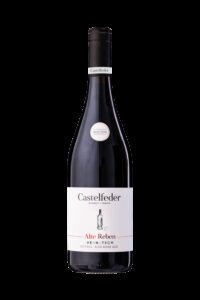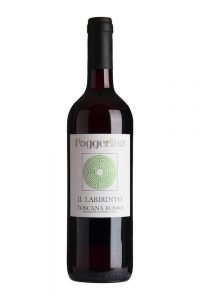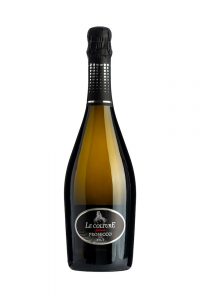We’re so glad you’re here!
The wine in your hands has travelled a long way to reach you and we’re pleased to know it has found a home with a curious and engaged drinker like yourself.
There’s a whole lot to say about all four of these wines, but for now, here are some key things you should know. If you’d like to dive deeper, click on the bottle images.
Castelfeder
Schiava Alte Reben
Smells Like: Roses, Strawberries
Tastes Like: Strawberries, Raspberries, Almonds
Pairs With: Traditionally Speck! Southeast Asian Cuisine (anything with basil, ginger, aromatic herbs)
Interesting Fact: Schiava (skee-ah-vah) known in German as Vernatsch is an autochthonous grape variety to the South Tyrol (Alto Adige in Northern Italy), This is a cool climate, high acid, light bodied, uncomplicated alpine red. Easy drinking and perfect with a slight chill. Speck Alto Adige PGI is a dry-cured, lightly smoked ham produced in South Tyrol. Part of its production is regulated by the EU under the Protected Geographical Indication (PGI). A true pairing!
Fattoria Poggerino
Il Labirinto Toscana Rosso IGT
Le Colture
Sylvoz Prosecco
Tenuta Fratelli Povero
Terre del Conte Roero Arneis
Tastes Like: Stone Fruits, Ripe Melon, Hint of Almond, Bone Dry & Very Crisp
Pairs With: Creamy Pastas, Chicken, Fish, Spring Vegetables, Fresh Herbs (i.e. tarragon)
Interesting Fact: Arneis (“little rascal”) gets its name from being difficult to grow and survive. It was nearly extinct in the 1960’s and brought back to be the number one planted white grape in the Roero hills of Piedmont in Northern Italy where it hails from.
Telling the full story of a wine requires going all the way back to the dirt the grapes were grown in, the mineral deposits found in that dirt, and even the prehistoric events that originally shaped that area. The story continues with the generations of individuals and families who tended that land, the farmer who cares for the vines that now grow there, and the winemaker who brings the grapes to life through their unique style and philosophy in the cellar.
And often, the story of a wine can stop at that moment. We easily forget about the journey that juice takes to make it into your glass here in Colorado.
This is where the wine importer comes into the picture.
Which leads us to the question:
What is a wine importer and why do they matter?
![]()
What is a wine importer and why do they matter?
In the US, alcoholic beverages are sold via a three-tier system. This is how the three tiers work together to bring foreign wine to the US markets:
Tier 1 – A licensed importer communicates with wineries in other countries to organize the shipment of their products into the country. The importer is responsible for making sure these wines meet all legal requirements for an alcoholic beverage in the US. The importer then sells this wine to a distributor in a specific state.
Tier 2 – The distributor purchases wine from the importer and then uses their team of salespeople to sell that wine directly to restaurants and retail businesses (like grocery stores, small bottle shops, and chains like Costco).
Tier 3 – When you purchase wine, like you have today at Argonaut, you are interacting with the third tier of the wine business. The third tier is comprised of businesses like wine bars, restaurants, large grocery chains, independent retailers, and anyone else who sells wine directly to the consumer. And from there, all that’s left is to drink it and enjoy!
![]()
Why is wine sold like this in the United States?
After prohibition was repealed in 1933 by the 21st Ammendement, the federal government gave each state the power to establish their own regulations for the production and sale of alcohol. This allowed states to tailor their legislation to best suite their citizens and economy. Though one thing that everyone did in common was to create a system where no single entity could control all steps of alcohol production through to distribution and sales to consumers. This guaranteed multiple points of control and opportunities for taxation. Most states have ultimately evolved to a three-tier system, as outlined above.
![]()
Why should we care about importers?
In addition to coordinating the technical aspects of bringing foreign wine into the country, importers act as curators, guides, and tastemakers. They are the ones with the most intimate understanding of the winemakers and farmers in their portfolio, making them the custodians of those producers’ stories—importers are in charge of communicating the nuanced stories of all the wines they import through the three tiers of the wine supply chain. As Volio puts it, we are “connecting the customer to the vineyard.” And our not-so-secret wish is that, when you purchase a bottle of wine (or four!) you take the time to familiarize yourself with the stories behind the juice inside as well as the importers who work to bring that wine to the US. We promise, this is a very rewarding experience!
Our advice? Shop local and develop a relationship with your local bottle shop wine professional or the sommelier at your favorite restaurant. They will enthusiastically guide you! And don’t forget to check the back label of each new bottle. Learning to trust the integrity of a specific importer’s portfolio will lead you on fascinating and delicious wine journeys.
Cin cin, Santé, Salud, and Cheers!
Volio’s take on all this
We ask ourselves: What is the next frontier of wine imports? What role will importers play as technology becomes more integrated in the wine-buying experience, consumer tastes evolve, and winemaking itself adapts to a changing globe?
Volio is always looking for ways to innovate while staying steadfast in our mission: to bring the consumer experience closer to the vineyard experience. It is our responsibility to relentlessly educate people–through all tiers of the industry–on the history, stories, and passionate individuals behind each bottle of wine we import.
Volio’s vision is for every customer to know the journey behind each bottle of wine.
Wine needs food and food needs wine…
Let’s bring this all full circle. Time to celebrate why you’re really here: you love wine! And so do we. One of the things we find particularly magical about wine is its ability to gracefully and humbly act as the anchor for people coming together. This beverage deserves the company of good food and good conversation. Wine has always been an integral part of community gatherings and everyday moments of connection. So cook something simple–we highly recommend the below recipe from the Lazzara family–gather your favorite people, pop a cork, and let the evening commence!
Traditional San Marzano Tomato Sauce
2 pounds of San Marzano tomatoes (quartered)
4 cloves of garlic (minced)
1/2 an onion (finely chopped)
Enough olive oil to support the Italian economy
Salt (handful)
Pepper (two pinches)
Crushed red pepper (optional)

Sofia, Angela, Tommaso, and Lorenzo Lazzara
1. Mince garlic and finely chop the onion then place in a four-quart pot on low heat with about two tablespoons of olive oil. Keeping the pot covered, let the onions sweat and the garlic simmer until the onions are translucent.
2. Add tomatoes and turn the heat to medium. Leave the top on for 20 minutes at medium heat. The tomatoes should be on a slow boil.
3. After 20 minutes, uncover and add another two tablespoons of oil, salt to taste, and a pinch of crushed red pepper (if desired). Let the sauce boil for another 15 minutes and reduce down. Remember, a little red pepper goes a long way here!
4. Blend everything in a food processor for 30 seconds to create a consistent tomato sauce.
5. Serve over spaghetti cooked al dente and enjoy with a favorite red wine.
Buon Appetito!
For information on all of Volio’s wines and producers, head to our main website.
And if this has piqued your interest, sign up for our mailing list to receive updates on our producers, upcoming events, and news from Volio.





